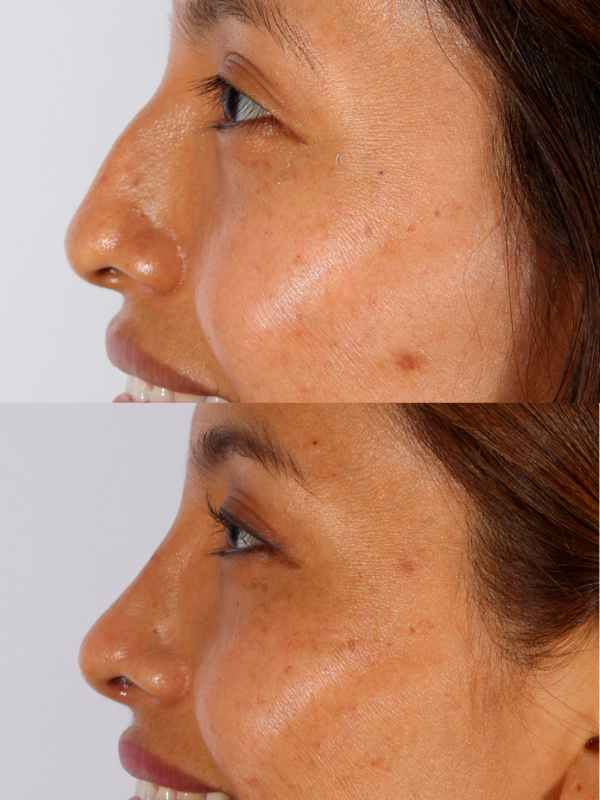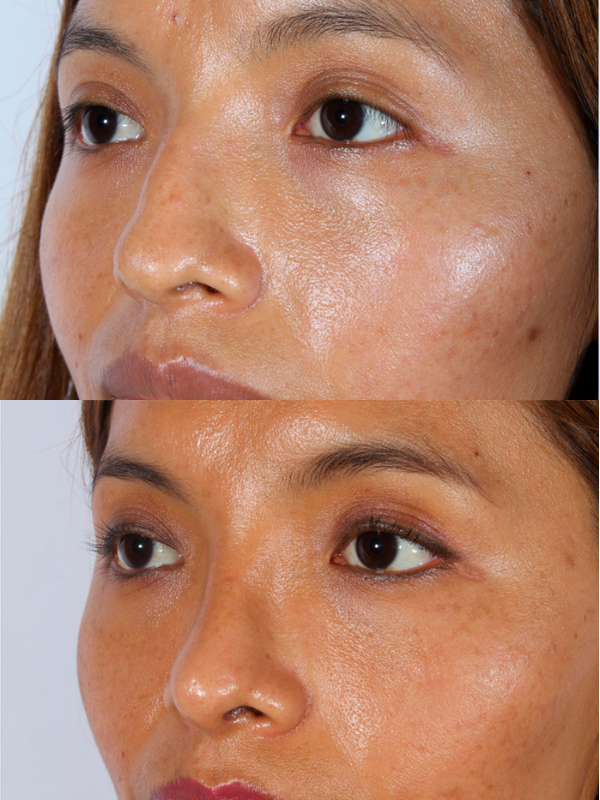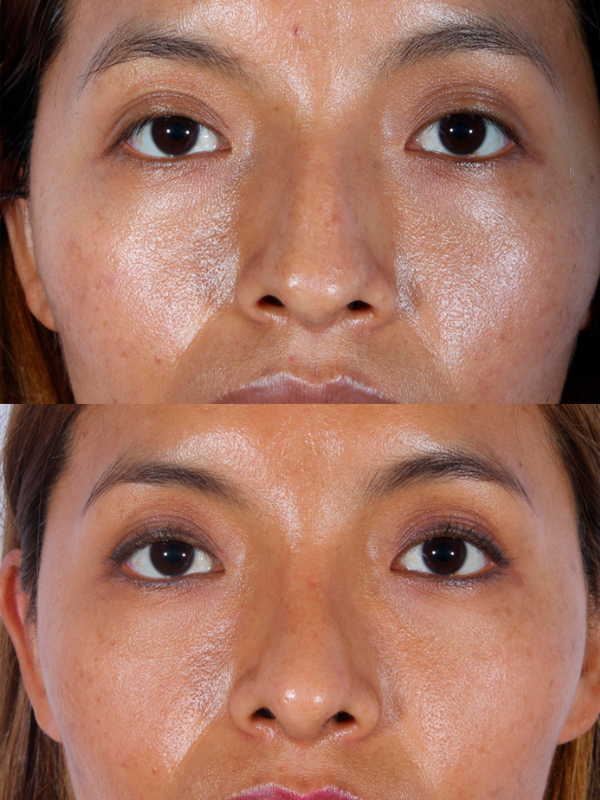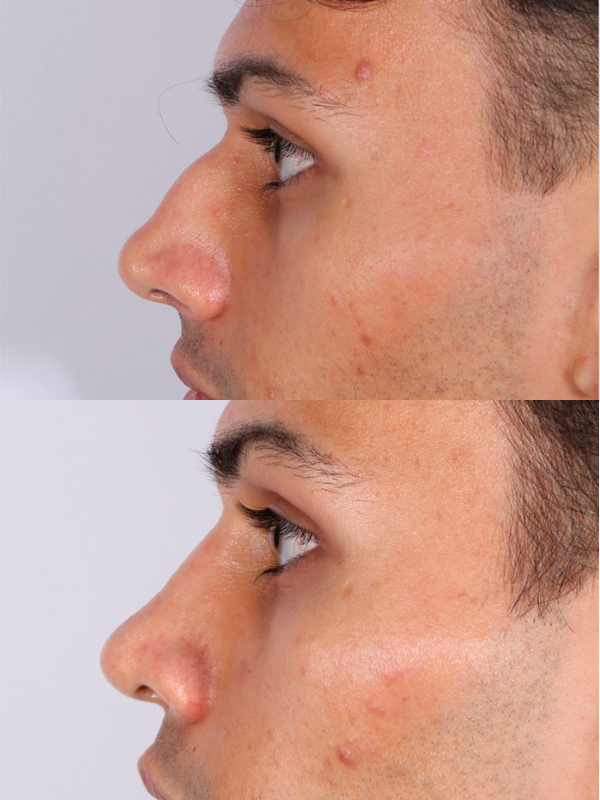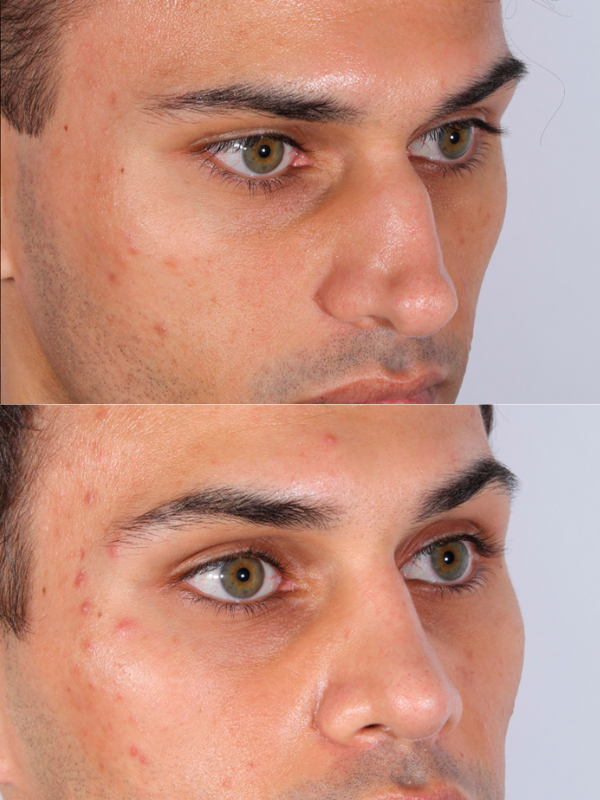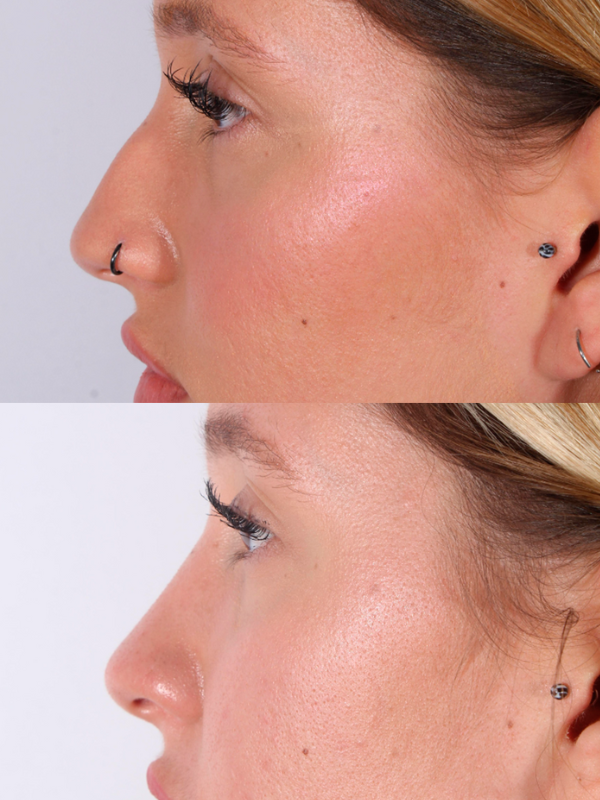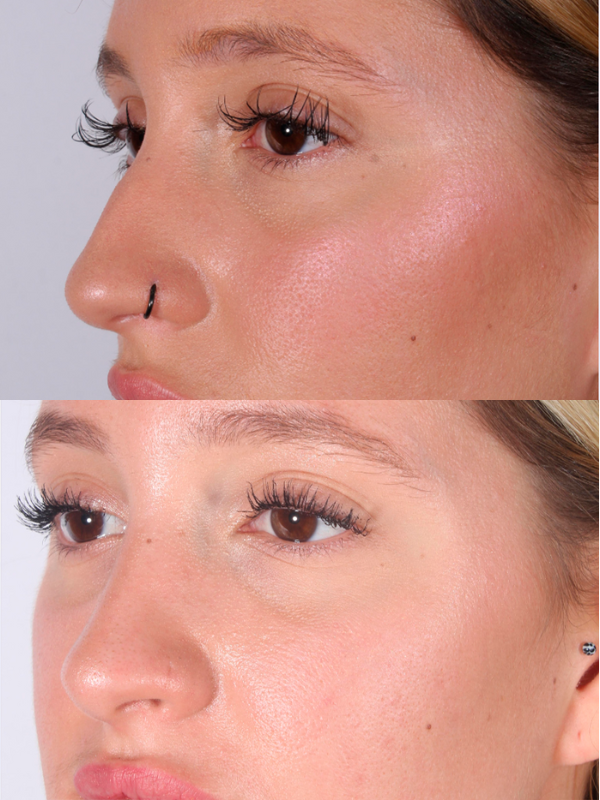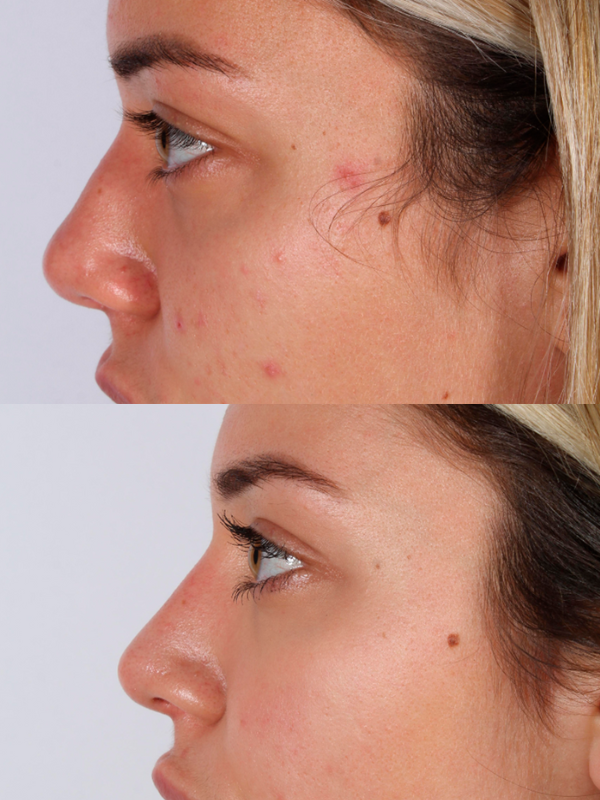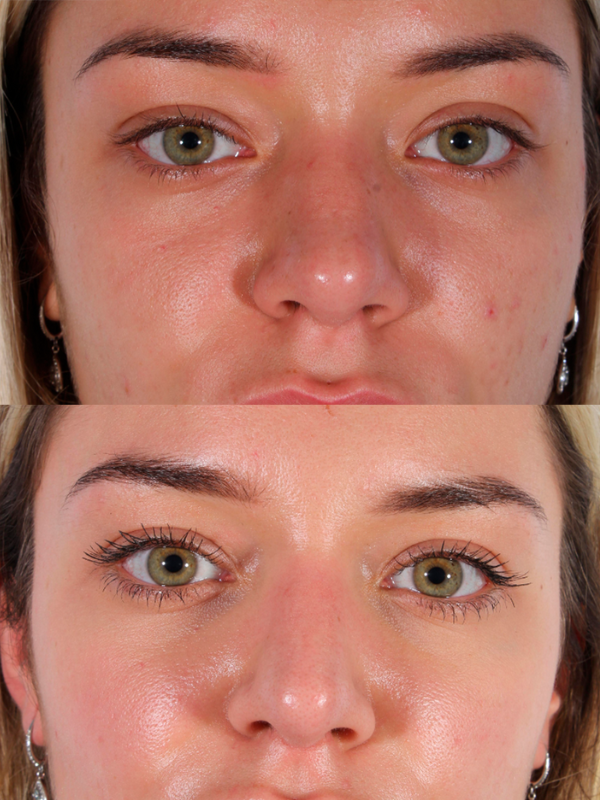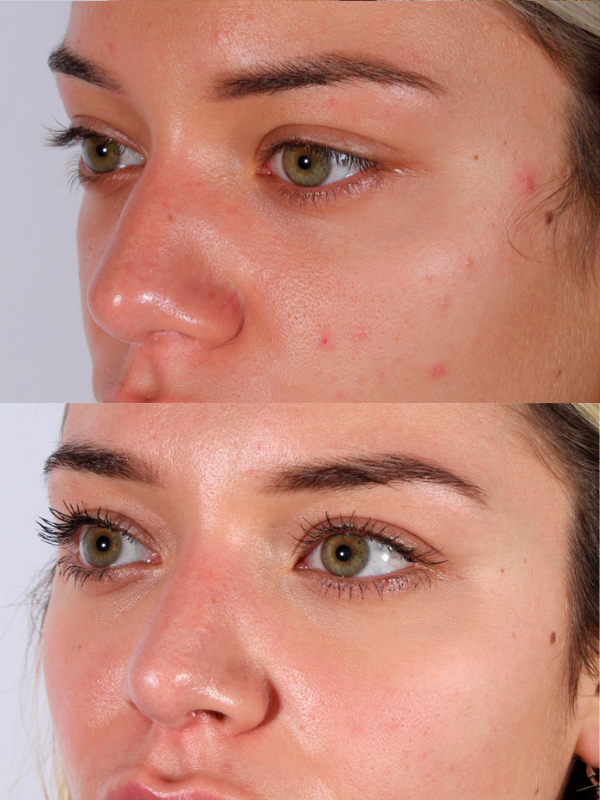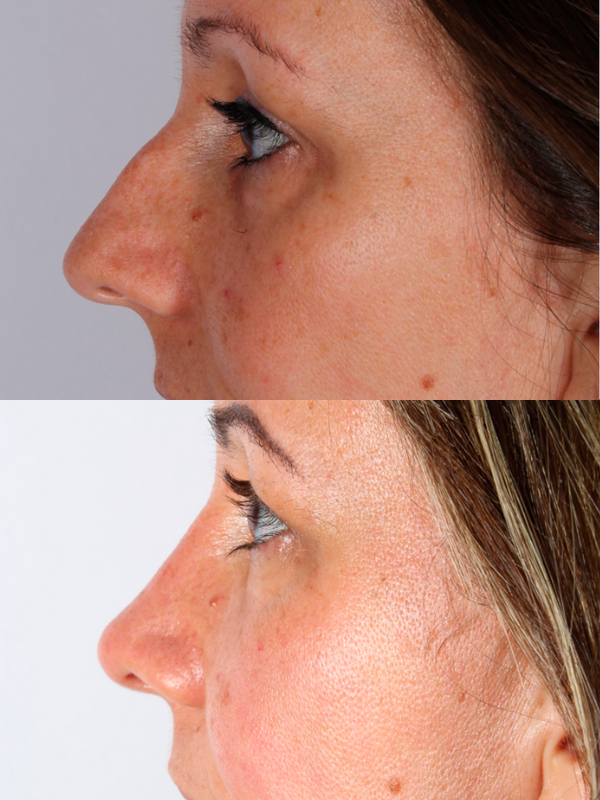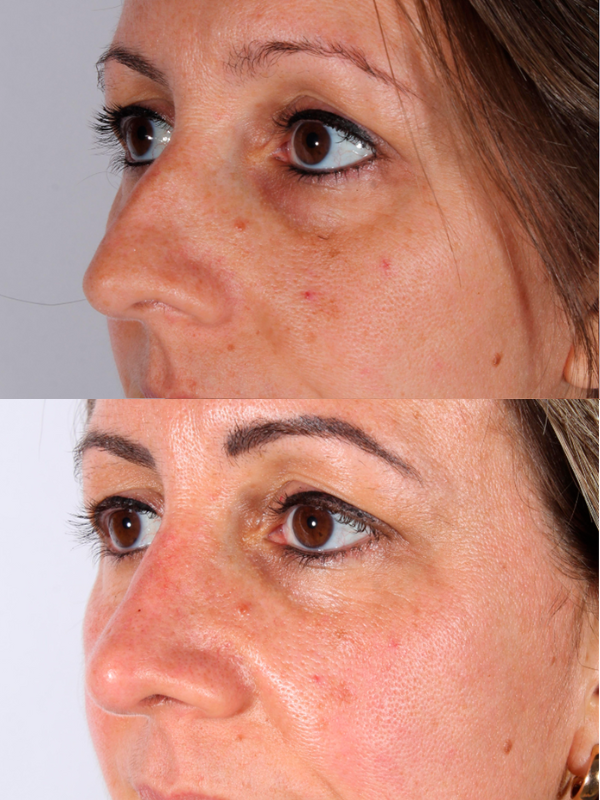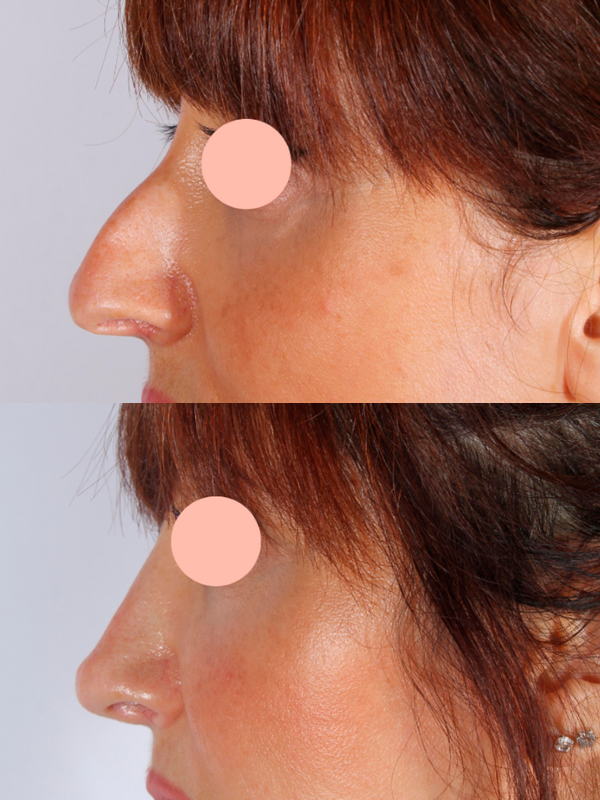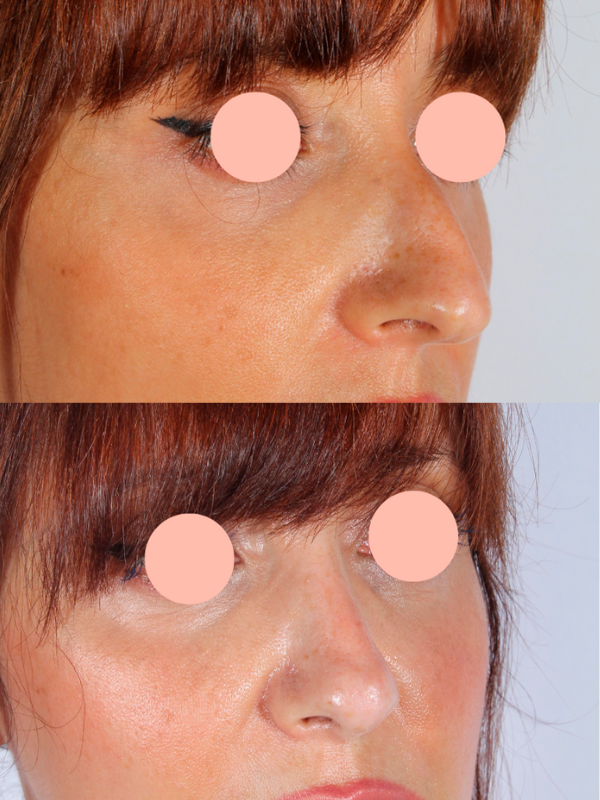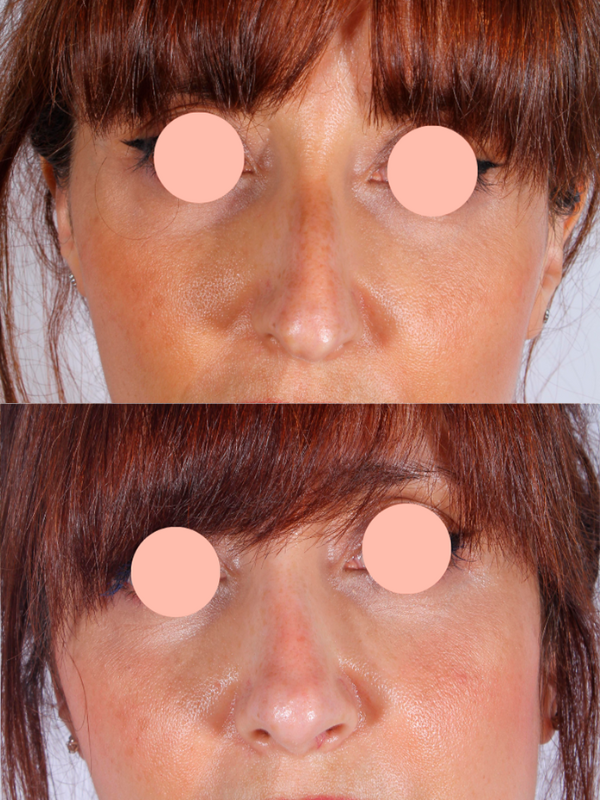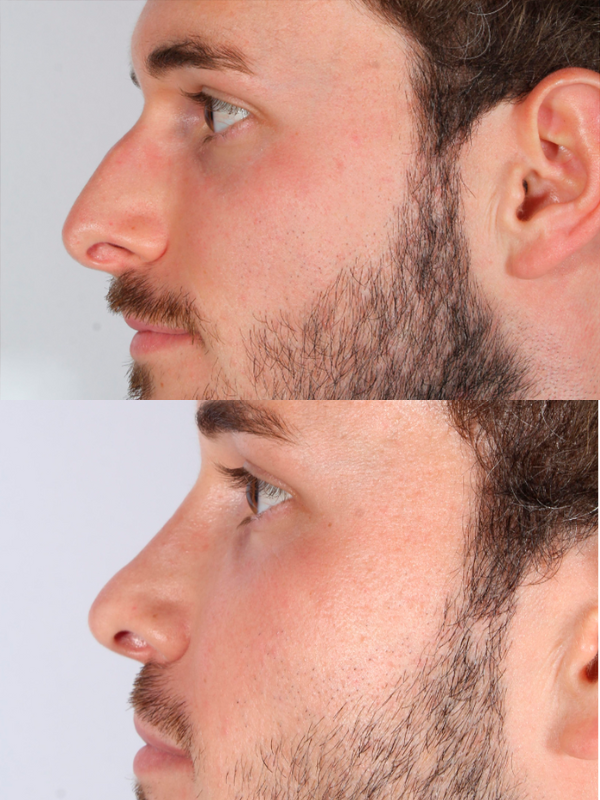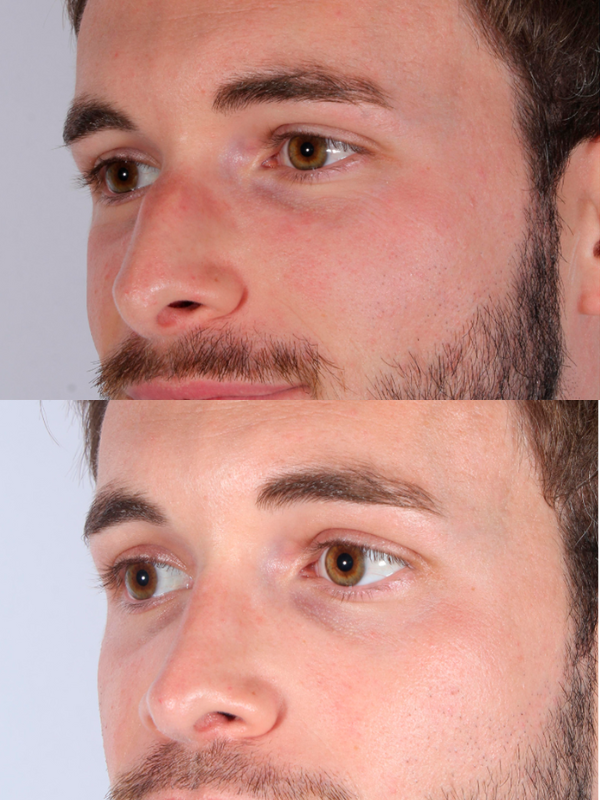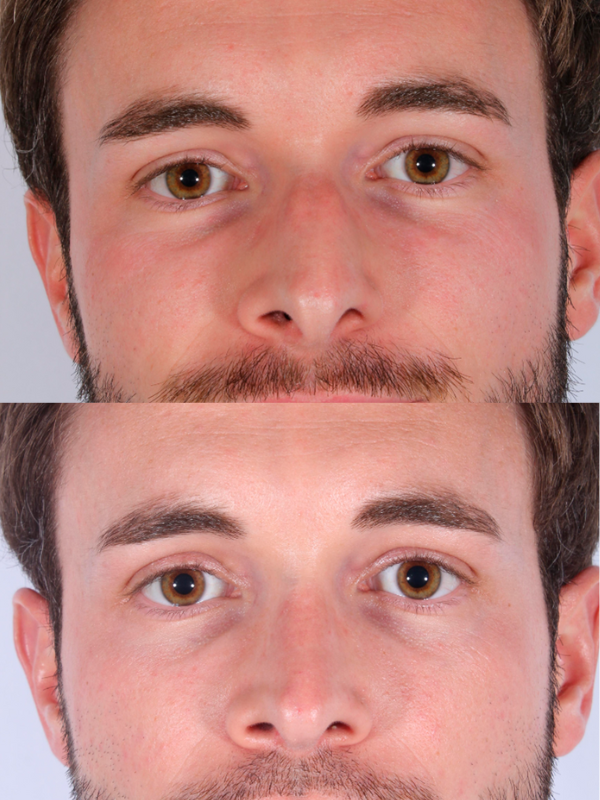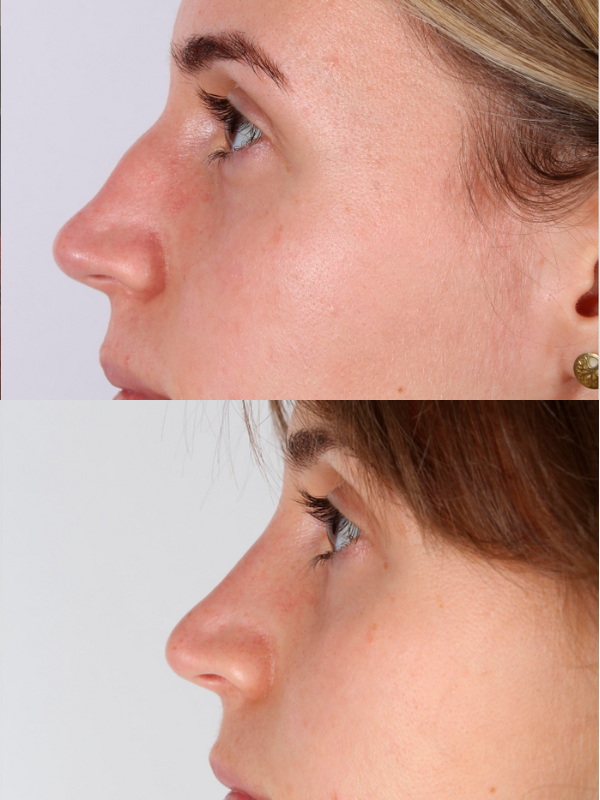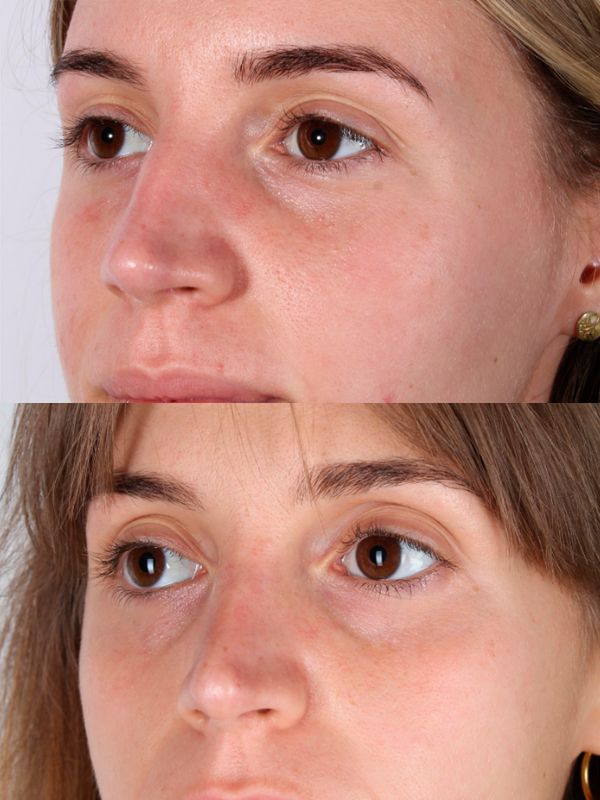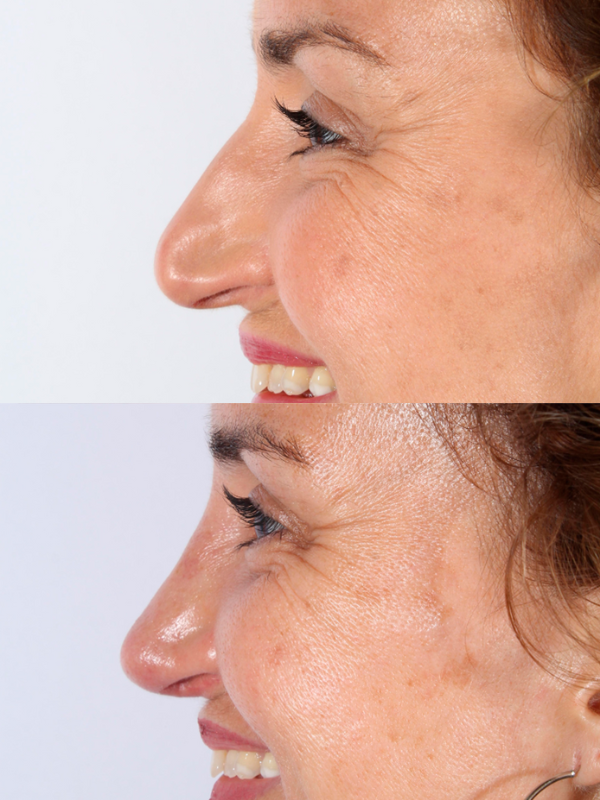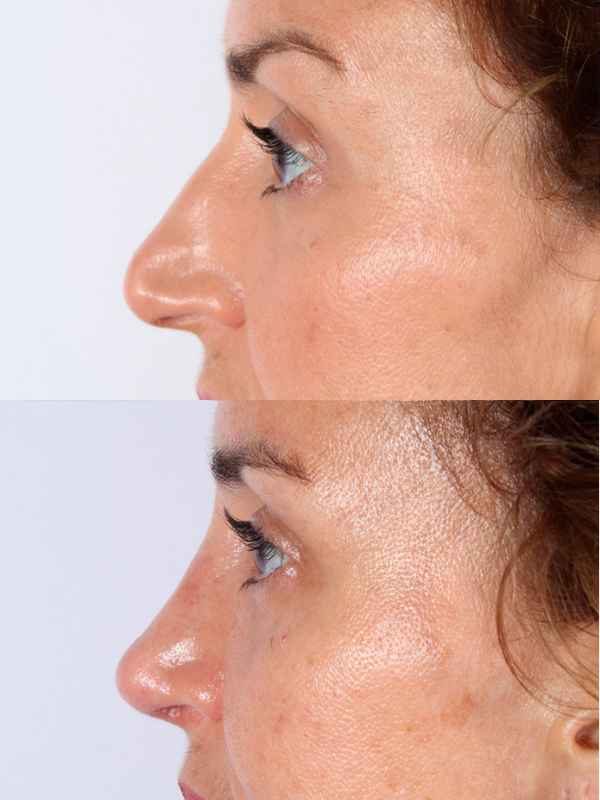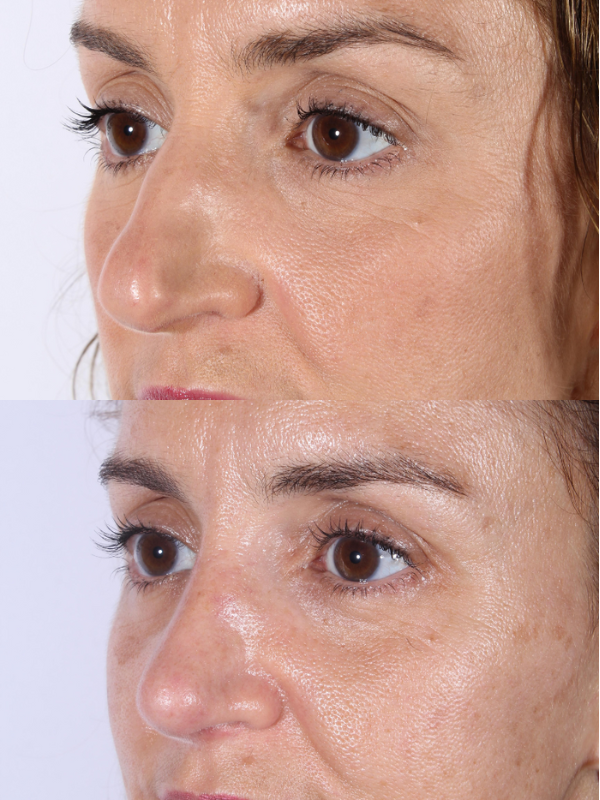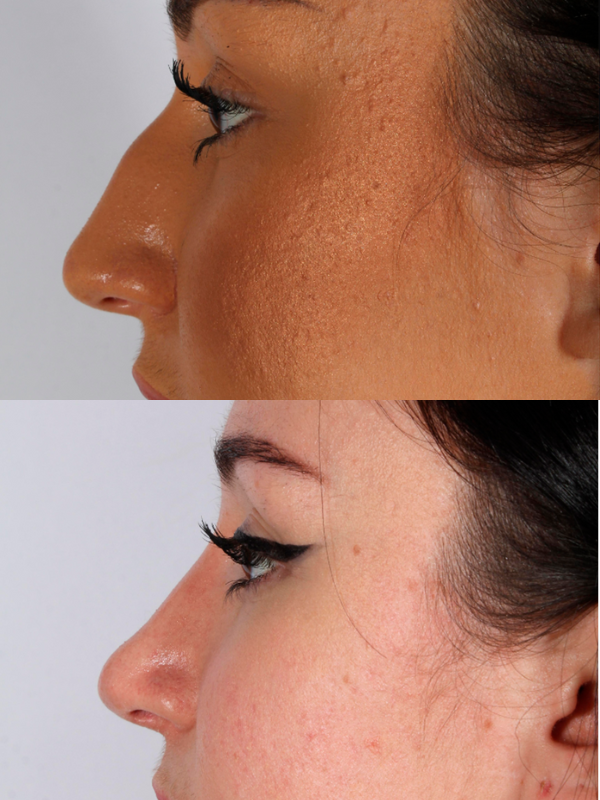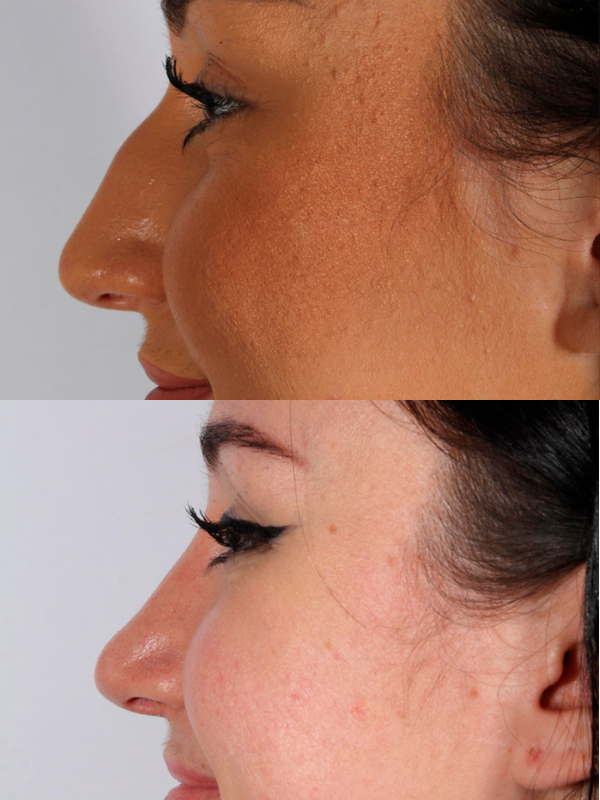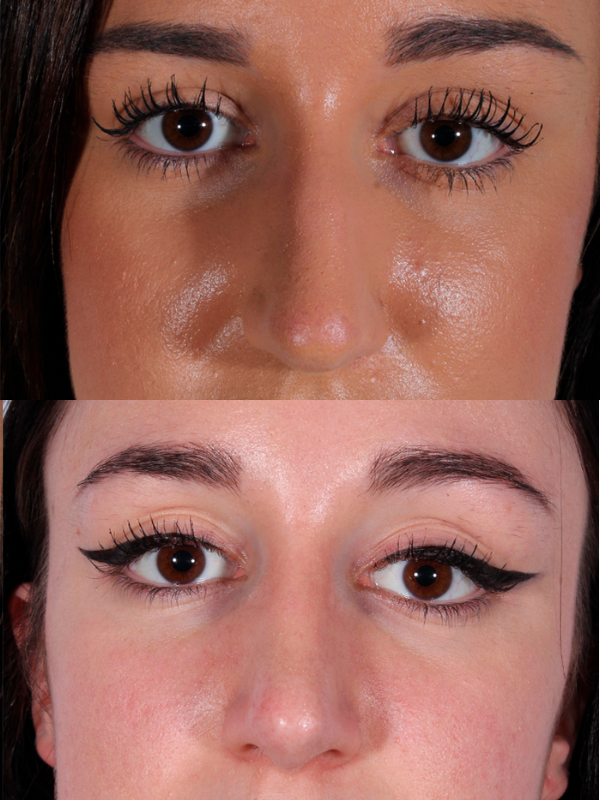
What is rhinoplasty?
Rhinoplasty is one of the most frequently performed surgical procedures in plastic surgery. This is a surgical procedure designed to modify the shape and size of the nose in order to achieve better facial harmony.
Rhinoplasty can reduce or increase the size of the nose, change the shape of the tip or bridge (dorsum), narrow the nostrils, or change the angle between the nose and upper lip. In addition to being a key element in facial aesthetics, rhinoplasty in many cases fulfils a restorative and functional role as it corrects congenital problems, trauma and some respiratory issues.
Who is the ideal candidate for rhinoplasty?
The ideal candidates for rhinoplasty are individuals who are seeking:
- Solutions to an aesthetic problem.
- An improved appearance, but not an absolutely perfect nose.
The most important thing is to have realistic expectations about the results you can achieve, so it is essential to talk to your surgeon and discuss the desired outcome together.
Book an
appointment
CLÍNICA PLANAS' DATA PROTECTION INFORMATION CLICK HERE
Purposes: To respond to your requests and to send you commercial information about our products and services, including via electronic means. Rights: At any time, you can withdraw your consent, access, rectify, delete your data and exercise other rights at doctor@clinicaplanas.com. Additional Information: Privacy Policy.
What does the operation involve?
Rhinoplasty generally takes between one and two hours and is commonly conducted using general anaesthesia, though local anaesthesia with sedation is an option, depending on the complexity of the surgery and the surgeon's preferences. Consult with your doctor before surgery to determine which type of anaesthesia is most appropriate for you. It is not usually necessary to stay overnight at the clinic.
The upper part of the nose structure is made up of bone, and the inner part is made up of cartilage. Rhinoplasty allows the shape to be modified by working on the bone, cartilage, or skin.
We perform ultrasonic rhinoplasty at Clínica Planas. This technique was introduced in Spain by Dr Jorge Planas. It is based on an ultrasonic device that maximises precision during the procedure and allows the bones of the nose to be filed down and reshaped without damaging soft tissue or blood vessels. The main advantages of this procedure are:
- Less bleeding and bruising.
- Smoother post-operative recovery.
- In many cases, it is not necessary to use plugs.
Rhinoplasty can be performed inside the nose or through a small external cut (incision) at the base of the nose, between the nostrils. The surgeon will probably realign the bone and cartilage beneath the skin. The process entails detaching the skin from its underlying bone and cartilage structure so that the support can be sculpted and the skin subsequently adapted to this new shape.
Rhinoplasty is conducted in one of two ways:
Closed
The operation is performed through incisions inside the nostrils so that no external scars are visible. Through the inside of the nose, the surgeon can carve and shape the nasal bones and cartilage and configure a new structure. Thus, the skin and mucous membranes retract and adapt until the desired shape.
Open
There are cases of greater complexity, such as the modification of large deformities of the tip. In these cases, open rhinoplasty is necessary. In this procedure, the surgeon directly accesses the structures of the nose through a small incision across the columella base, leaving an almost invisible scar.
Other nose corrections:
Saddle nose
There are many reasons why a person may have a saddle nose, ranging from trauma and failed prior surgical interventions to nasal forms often seen in some Asian populations, or simply its inherent nature as a nose with a sunken bridge.
In such cases, we can resort to the skin regeneration technique invented and published by Dr Jorge Planas.
Rhinoplasty with the Integra dermal regenerator permits the formation of a more robust dermal layer, which helps shape the nose, enhance its volume, or adjust the nasofrontal angle.
All this without using synthetic materials or the patient's own cartilage.
Augmentation rhinoplasty
The aim of rhinoplasty is not always to reduce the size of the nose; on the contrary, some patients need to give more prominence to the tip, to lift a sunken bridge or to correct deformities of both congenital and traumatic origin. In these cases, the size of the nose will increase. It is usually performed using grafts from the patient's own tissue to shape or support the nose.
Short nose
There are also occasions when the patient has a nose that is too short, which detracts from the overall harmony of the face. In these cases, we can perform cartilage grafts from the patient's own tissue to lengthen a short nose.
What is a septoplasty?
In many cases, patients visit the surgeon's office not only for cosmetic reasons but also for respiratory problems. In these cases, and after a thorough examination by an ENT specialist to determine the cause of the malfunction, a septoplasty or turbinate surgery may be recommended during the same surgical procedure in which we will correct the aesthetics of the nose. This procedure is what we call rhinoseptoplasty.
Benefits of the surgery
The nose is a fundamental part of our face, which is why it is a source of complexes and insecurities for many people. Rhinoplasty allows patients to have a nose that matches their facial features, bringing harmony to the face.
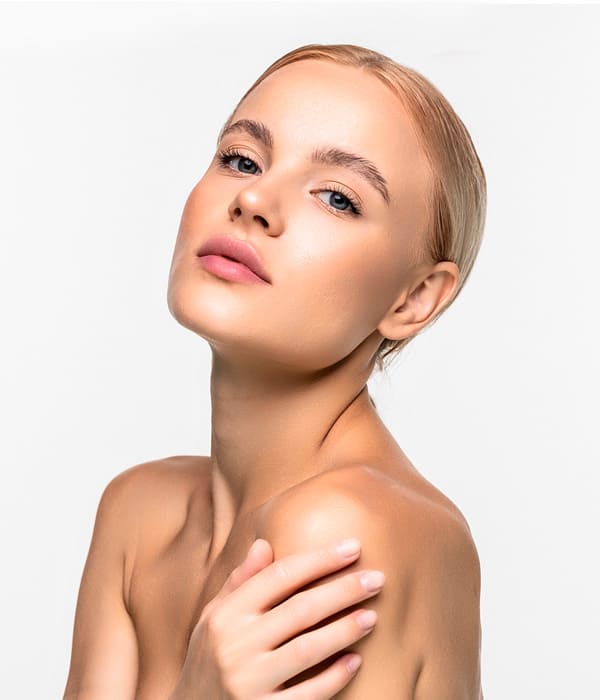
Price of rhinoplasty
Each rhinoplasty is a different case that must be carefully evaluated. It is not just a matter of reducing or increasing the size of the nose, but of adapting it to each person's individual features and characteristics. In this type of cosmetic surgery, dialogue with the patient to compare their wishes and expectations with the possibilities for improvement offered by the procedure is particularly important.
The actual price of the rhinoplasty can only be established after an initial free consultation with the surgeon. This will enable you to assess the particularities of the case and the patient's needs. With this information, we will be able to provide you with a personalised quote.
However, we can provide an approximate cost to give you a rough idea of the cost of the surgery.
Rhinoplasty in Barcelona starting at €7,500. This price includes:
- Complete preoperative care
- Specialist anaesthetist
- Our proprietary operating theatres
- Inpatient
- Nursing
- 24-hour post-treatment service.
Rhinoplasty Before and after
Here are some before and after cases of rhinoplasty. These images contain different examples of the results of this surgery. However, every patient is unique, which is why we offer a free initial consultation with an expert surgeon.
Feedback after nose surgery

Preoperative care: How to prepare
Before scheduling rhinoplasty, you should meet with the surgeon to discuss the important factors that will determine whether the surgery can work well for you. A thorough medical history, physical examination, photographs, and a discussion of the patient's motivations and expectations are key to achieving a satisfactory and realistic outcome from the surgery.
It is essential to undergo a medical examination beforehand to detect any possible abnormalities that could contraindicate surgery. Naturally, the skin of the nose area must be clear of any inflammatory conditions or infections. It is also essential to take care of any flu or cold that causes symptoms of nasal congestion.
If necessary, an ENT specialist will assess the patient's respiratory function in order to prescribe the appropriate treatment.
Postoperative care
When the surgery is complete, a plastic splint is placed to help maintain the new shape of the nose. This will be removed 6 days after the procedure.
Depending on the technique, nasal plugs may or may not be placed in both nostrils to prevent bleeding and stabilise the nasal septum. We use a technique known as ultrasonic rhinoplasty at Clínica Planas, so there is no need for these plugs. However, if in any specific case the surgeon has to insert plugs, they will be removed after 3 days.
The return to normal
The postoperative period following rhinoplasty is not painful at all. After surgery, and especially during the first 24 hours, you may experience slight swelling and discomfort in your nose. Discomfort that is well controlled with medication.
You will notice that the swelling and bruising around your eyes will increase, reaching a peak after 2 or 3 days. In any case, you will feel better than you might appear to be.
Most bruising and swelling will disappear within about 2 weeks.
It is normal to experience slight bleeding from the nose during the first few days. Try to blow your nose gently during the first week until the tissues heal.
If you have had nasal plugs inserted, they will be removed in 1 or 2 days.
After a week, or at most two, if a plaster cast has been applied, it will be removed, along with any stitches, if applicable.
Most patients who undergo rhinoplasty feel well within two days and are able to resume normal activities in about a week. However, you should not perform certain activities until several weeks have passed. Follow the instructions given to you by your surgeon.
We also recommend refraining from any type of strenuous physical activity (jogging, swimming, push-ups, etc.) for 2 to 3 weeks, and stay away from any activity that puts you at risk of hitting your nose. Moreover, do not sunbathe for 8 weeks.
Wash your face and apply make-up carefully. You can start wearing contact lenses as soon as you like, but if you wear glasses, you must take certain precautions.
F.A.Q.
-
When will I be able to sunbathe?
During the first month, you should protect your face from sun exposure, especially the lower eyelid area. Sunbathing could leave a dark spot on the skin that would take a long time to disappear.
-
Will I be able to wear glasses?
Although it is not specifically contraindicated, it is recommended not to wear glasses continuously during the first month after surgery. Not wearing glasses will protect against marks on the swelling caused by the operation, which persists during this first month even though it is not visible.
-
Can I correct both a cosmetic problem and a respiratory function problem at the same time?
In most cases, yes, following diagnosis by an ENT specialist. This specialist will work alongside the cosmetic surgeon to carry out the septoplasty or turbinate surgery.
-
What is the minimum age to have the operation?
The minimum age for this procedure is usually between the ages of 15 and 17, when the ossification process of the facial bones is complete. However, it is usually recommended to wait until the age of 18 before making the decision.
-
Is the surgery painful?
Rhinoplasty is not a painful procedure. In some cases, discomfort can be alleviated with common painkillers.
-
What are the associated risks?
All surgical procedures entail some risk. However, rhinoplasty is a very safe procedure with few complications. When the ossification process of the facial bones is complete.
-
Will I be able to breathe through my nose?
In practically all cases, as no plugs are used, the patient can breathe through the nose from the outset, although this may be somewhat difficult at first due to the inevitable post-surgical inflammation.
-
When will the results of rhinoplasty be visible?
Six days after the splint is removed, your nose will already look almost final, though there will be some slight swelling. It will take approximately six months to determine whether we have achieved the final result.
-
Can I have rhinoplasty in Barcelona if I live somewhere else?
Of course, at Clínica Planas we offer the possibility of consulting with the surgeon online. You will only need to travel to Barcelona for the surgery and post-operative check-ups.
-
Does the price of rhinoplasty include everything?
After the initial complimentary consultation with the surgeon, we can provide each patient with a personalised quote. This price for rhinoplasty includes:
1. Complete preoperative care.
2. Specialist anaesthetist
3. Our proprietary operating theatres
4. Inpatient
5. Nursing
6. 24-hour post-treatment service.
Expert opinion

The nose is a key feature in facial expression and balance, which is why, for many people, it can become a source of complexes or insecurities. Rhinoplasty offers the possibility of achieving a nose more in harmony with one's features, enhancing facial harmony and boosting self-confidence.
Related treatments
-
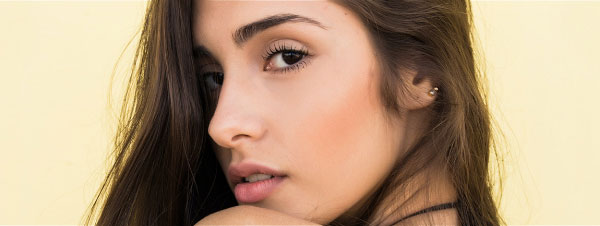
Ultrasonic Rhinoplasty
Rhinoplasty is a surgical procedure designed to correct nasal deformities in order to improve facial balance and harmony. -
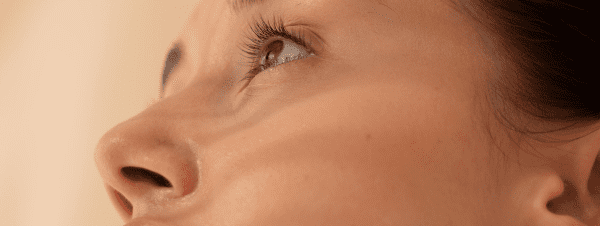
Secondary Rhinoplasty
Secondary rhinoplasty is a surgical procedure that corrects aesthetic and functional problems following a previous rhinoplasty. Find out more now. -
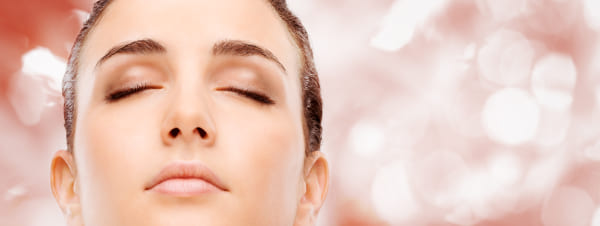
Preservation rhinoplasty
Preservation rhinoplasty focuses on preserving as much of the natural nasal structures as possible.
Related articles
-
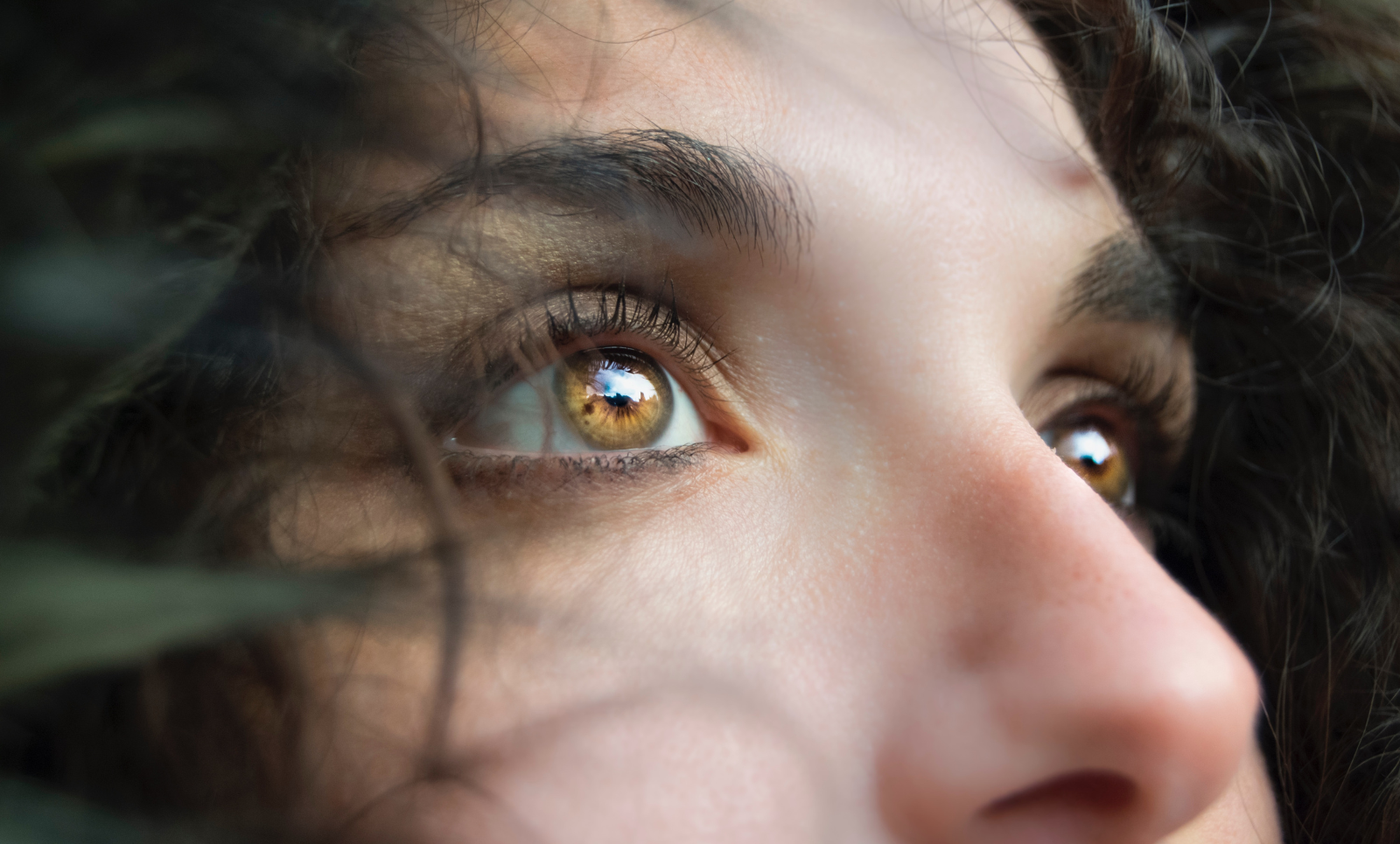
Postoperatorio de una rinoplastia: cuidados y recuperación
El postoperatorio de una rinoplastia requiere observar una serie de cuidados para favorecer la recuperación y evitar problemas. Te los contamos. -
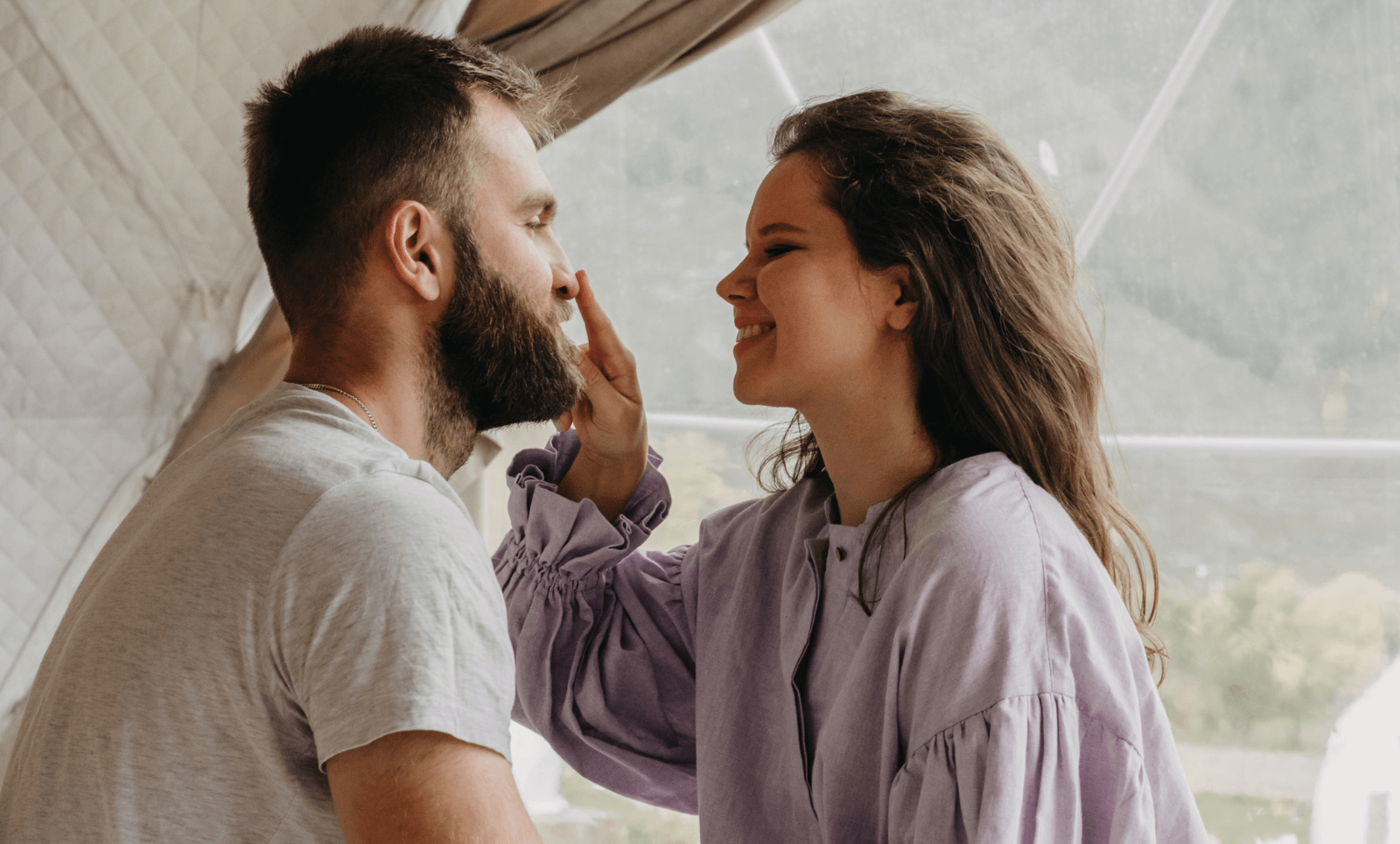
Tipos de rinoplastia: ¿Cuántos existen y cuál elegir?
Existen diferentes tipos de rinoplastia en función de varios factores, como la técnica elegida o los objetivos estéticos del paciente. -
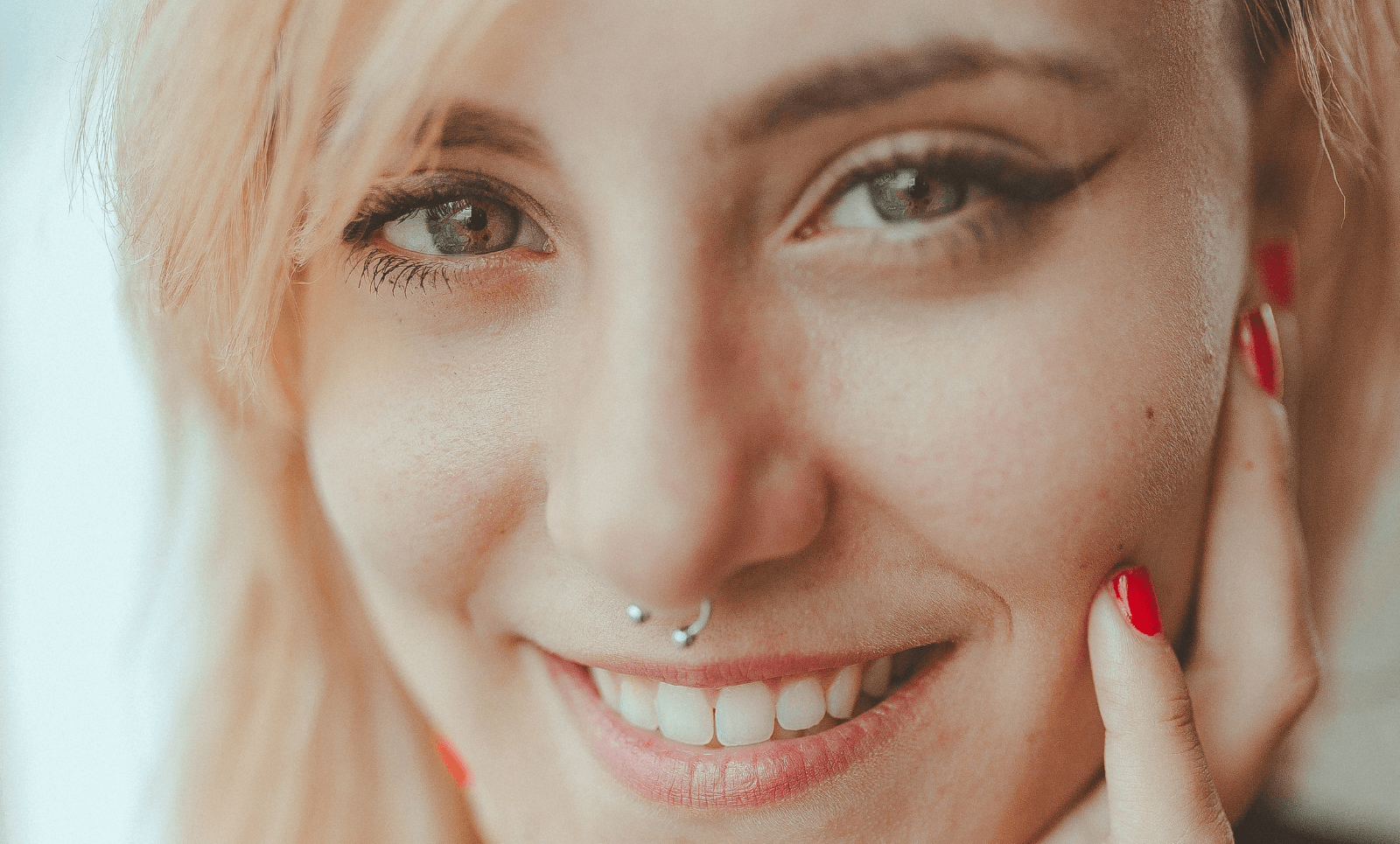
Nariz aguileña: cómo es, procedimientos y recuperación
La nariz aguileña es una nariz con una marcada curva en el dorso nasal, semejante a la de un águila. Descubre cómo corregirla.

































